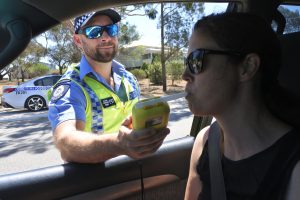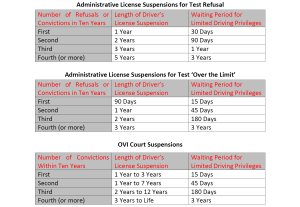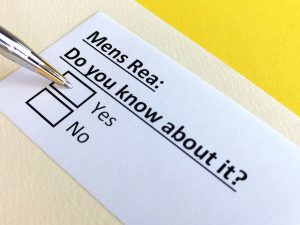 The Ontario Provincial Police (OPP) recently implemented a policy of administering a breath alcohol test to every driver stopped for a traffic offense. Even if the stop is for a minor violation, and even if the officer has no suspicion the driver is under the influence, the driver must submit to a breath test. Refusing the test is a criminal offense. Could this happen in Ohio?
The Ontario Provincial Police (OPP) recently implemented a policy of administering a breath alcohol test to every driver stopped for a traffic offense. Even if the stop is for a minor violation, and even if the officer has no suspicion the driver is under the influence, the driver must submit to a breath test. Refusing the test is a criminal offense. Could this happen in Ohio?
Articles Posted in DUI/OVI laws and cases
Patrick Mahomes, Sr. and Felony DUI / OVI
 Patrick Mahomes, Sr. was indicted for drunk driving in Texas. According to Spectrum News, Mahomes has two prior DWI convictions. In Texas, a third DWI (called ‘OVI’ in Ohio) is a felony offense which carries a prison term of two years to ten years. But what if a person is charged with a felony OVI in Ohio? Continue Reading
Patrick Mahomes, Sr. was indicted for drunk driving in Texas. According to Spectrum News, Mahomes has two prior DWI convictions. In Texas, a third DWI (called ‘OVI’ in Ohio) is a felony offense which carries a prison term of two years to ten years. But what if a person is charged with a felony OVI in Ohio? Continue Reading
Vehicular Assault and Vehicular Homicide in Ohio Require ‘Motor Vehicle’
 In Ohio, there is a difference between a ‘vehicle’ and a ‘motor vehicle’. In cases of Vehicular Homicide and Vehicular Assault, the difference matters. The Ohio Supreme Court recently decided an Aggravated Vehicular Assault case in which the defendant’s guilt hinged on the definition of ‘motor vehicle’. The Court’s decision affects both vehicular assault and vehicular homicide cases.
In Ohio, there is a difference between a ‘vehicle’ and a ‘motor vehicle’. In cases of Vehicular Homicide and Vehicular Assault, the difference matters. The Ohio Supreme Court recently decided an Aggravated Vehicular Assault case in which the defendant’s guilt hinged on the definition of ‘motor vehicle’. The Court’s decision affects both vehicular assault and vehicular homicide cases.
Commercial Drivers and DUI / OVI in Ohio
 A truck driver hauling 43,000 pounds of beer was charged with DUI (called ‘OVI’ in Ohio). According to KRCR TV, the driver’s blood alcohol content was ‘over the limit’ for both commercial drivers and non-commercial drivers. While the irony of a beer deliverer being charged with DUI may sound comical, a commercial driver would find nothing funny about being charged with OVI. For holders of a commercial driver’s license (CDL), the rules related to OVI are strict, and the consequences are severe.
A truck driver hauling 43,000 pounds of beer was charged with DUI (called ‘OVI’ in Ohio). According to KRCR TV, the driver’s blood alcohol content was ‘over the limit’ for both commercial drivers and non-commercial drivers. While the irony of a beer deliverer being charged with DUI may sound comical, a commercial driver would find nothing funny about being charged with OVI. For holders of a commercial driver’s license (CDL), the rules related to OVI are strict, and the consequences are severe.
Driving Privileges for DUI/ OVI in Ohio
 I came across an article about a pending bill in South Dakota which proposes expanding the scope of driving privileges for people convicted of DUI (called ‘OVI in Ohio). It reminded me that, in Ohio, driving privileges related to OVI are often misunderstood. This article clarifies Ohio law regarding limited driving privileges and describes how driving privileges work in practice.
I came across an article about a pending bill in South Dakota which proposes expanding the scope of driving privileges for people convicted of DUI (called ‘OVI in Ohio). It reminded me that, in Ohio, driving privileges related to OVI are often misunderstood. This article clarifies Ohio law regarding limited driving privileges and describes how driving privileges work in practice.
DUI/OVI and Improperly Handling Firearms in Ohio
 Muhammad Wilkerson, former defensive end for the New York Jets, was arrested for Operating a Vehicle under the Influence and Unlawful Possession of a Loaded handgun. Wilkerson’s arrest occurred in New Jersey. If Wilkerson were arrested for these offenses in Ohio, he would be charged with OVI and Improperly Handling Firearms in a Motor Vehicle. This article describes the elements, court process, and potential penalties for these offenses in Ohio.
Muhammad Wilkerson, former defensive end for the New York Jets, was arrested for Operating a Vehicle under the Influence and Unlawful Possession of a Loaded handgun. Wilkerson’s arrest occurred in New Jersey. If Wilkerson were arrested for these offenses in Ohio, he would be charged with OVI and Improperly Handling Firearms in a Motor Vehicle. This article describes the elements, court process, and potential penalties for these offenses in Ohio.
Using Marijuana is Legal in Ohio-Driving Under the Influence of Marijuana is Not
 As of today, recreational marijuana use is legal in Ohio. What is not legal is operating a vehicle under the influence of marijuana. Ohio has five laws related to cannabis and cars, and those laws remain unaffected by Ohio’s legalization of recreational marijuana.
As of today, recreational marijuana use is legal in Ohio. What is not legal is operating a vehicle under the influence of marijuana. Ohio has five laws related to cannabis and cars, and those laws remain unaffected by Ohio’s legalization of recreational marijuana.
Is Lack of “Intent” a Defense to Vehicular Crimes in Ohio?
 After a domestic dispute, an Ohio woman intentionally hit a man with her car and was charged with Aggravated Vehicular Assault. According to a recent story by WHOTV7, the woman drove her SUV over a sidewalk and into a yard to hit the man. That does sound intentional. When it comes to vehicular crimes in Ohio, is intent necessary?
After a domestic dispute, an Ohio woman intentionally hit a man with her car and was charged with Aggravated Vehicular Assault. According to a recent story by WHOTV7, the woman drove her SUV over a sidewalk and into a yard to hit the man. That does sound intentional. When it comes to vehicular crimes in Ohio, is intent necessary?
Inventory Searches and DUI/OVI in Ohio
 Following a DUI arrest (called ‘OVI’ in Ohio), it is common for an officer to search the suspect’s vehicle before having the vehicle towed. This ‘inventory search’ is an exception to the general requirement of a search warrant. For an inventory search to be valid, it must be done in accordance with the policy of the law enforcement agency. A recent case decided by the Ohio Supreme Court addressed what evidence is necessary to prove the search complied with the law enforcement agency’s policy. Continue Reading
Following a DUI arrest (called ‘OVI’ in Ohio), it is common for an officer to search the suspect’s vehicle before having the vehicle towed. This ‘inventory search’ is an exception to the general requirement of a search warrant. For an inventory search to be valid, it must be done in accordance with the policy of the law enforcement agency. A recent case decided by the Ohio Supreme Court addressed what evidence is necessary to prove the search complied with the law enforcement agency’s policy. Continue Reading
DUI/OVI and Hit-Skip in Ohio
 A police officer was recently charged with DUI (called ‘OVI’ in Ohio) and Fleeing the Scene of an Accident. According to News 13 in Myrtle Beach, the officer is a sergeant who serves as the supervisor of the traffic division. In our OVI defense practice, we have represented clients suspected of OVI and Failure to Stop After Accident (commonly called ‘Hit-Skip’). In some cases, the driver is charged only with Hit-Skip. In other cases, the driver is charged with both Hit-Skip and OVI. Drivers in those situations also face the possibility of being charged with felony offenses.
A police officer was recently charged with DUI (called ‘OVI’ in Ohio) and Fleeing the Scene of an Accident. According to News 13 in Myrtle Beach, the officer is a sergeant who serves as the supervisor of the traffic division. In our OVI defense practice, we have represented clients suspected of OVI and Failure to Stop After Accident (commonly called ‘Hit-Skip’). In some cases, the driver is charged only with Hit-Skip. In other cases, the driver is charged with both Hit-Skip and OVI. Drivers in those situations also face the possibility of being charged with felony offenses.
 Columbus OVI/DUI Attorney Blog
Columbus OVI/DUI Attorney Blog

